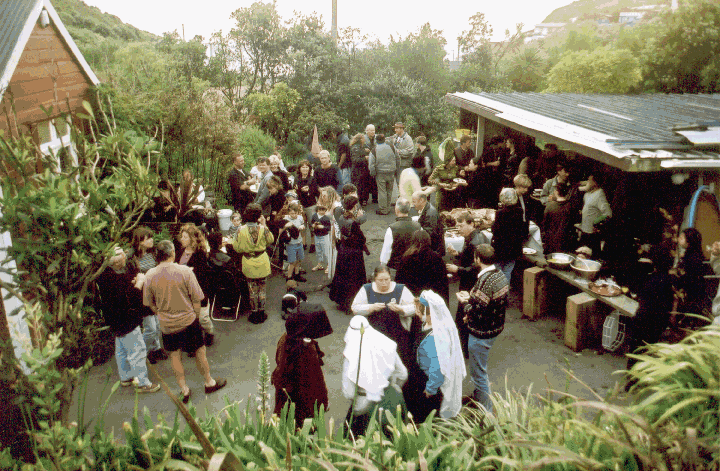
The Meadery
Our commercial meadery evolved from keeping bees to supply honey for ourselves. Most bee-keepers probably make mead which they enjoy at home but in our case, because we have a good water supply at hand in the natural spring in the meadery gardens, and having tested our mead for many years on our friends and family, we decided to open commercially on Valentine's day of 1999.

The People
We are artisans who have put a lot of love and care into our products. We maintain a personal relationship with our products and prefer operating as a boutique producer.
Jacob De Ruiter
I am a new Zealand born Dutchy who speaks both Dutch and English fluently and some German. I studied at Lincoln University and graduated with a Diploma of Horticulture and Diploma of Parks and Recreation. My interest in plants and flowers led me to beekeeping and mead-making has been a natural progression.
Coral Hyam
I live in a very beautiful spot on the south coast of Wellington with a dog and a cat as well as my partner Jacob. I enjoy belly dancing, swimming, astrology, astronomy, traveling and making mead.
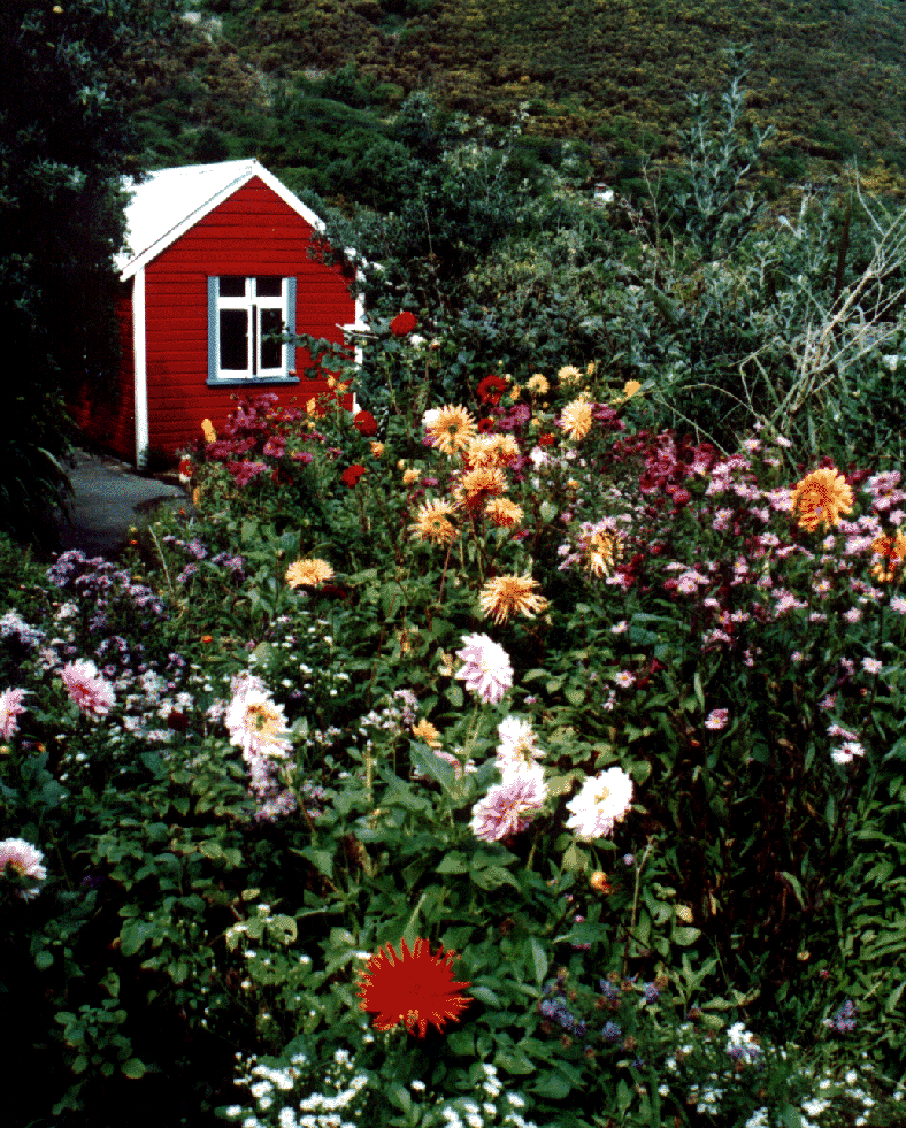
The Cottage
The Devil's Bridge Cottage, which houses our meadery equipment and tastings, is an authentic Victorian farm cottage thought to originate in the 1860s. It takes its name from the Devil's Bridge which was once in Karori nearby where the cottage was built. It was declared a historic building by the Wellington City Council, and relocated to Wind Gardens in order to preserve it.Here you can read an article on the history of the cottage.
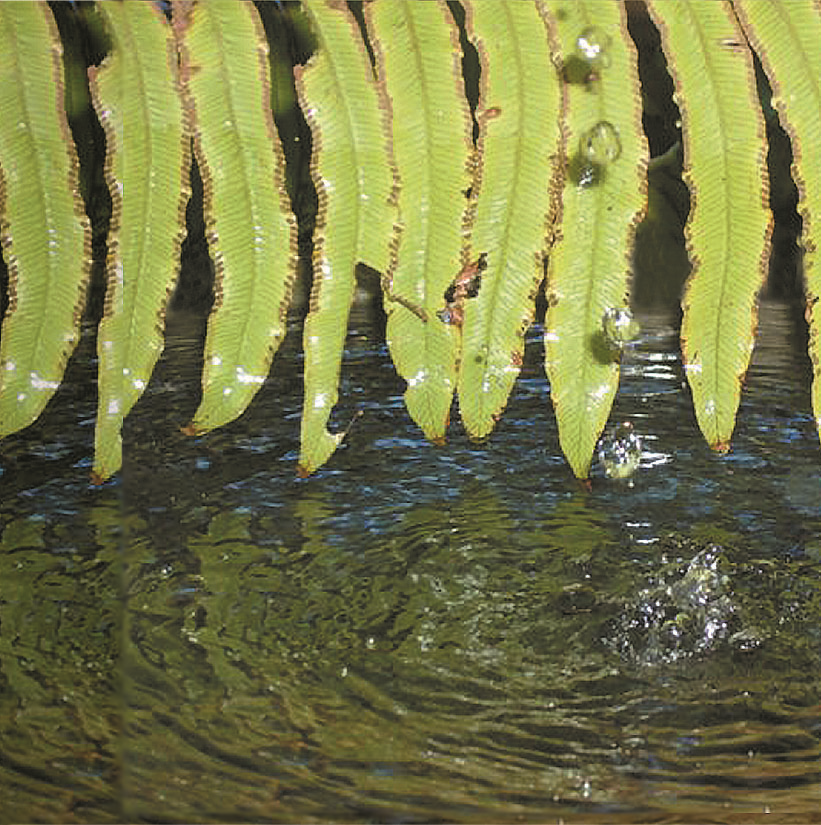
The Spring
The Meadery spring never runs dry. The water has natural salts and minerals which allow us to complete fermentations without additives which would be needed otherwise to 'feed' the yeast. The spring bubbles out in the meadery gardens where you hear it running, and the sounds of the native bird, the Tui.
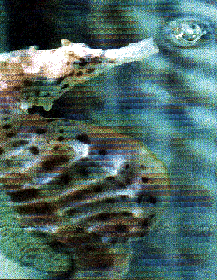
The Manaia
Our logo, the exquisitely beautiful and mysterious seahorse (manaia in Maori), is universally associated with fertility and conjugal happiness. The male has a pouch where the female lays her eggs, to be fertilised by the male. The male incubates the eggs, and a month later tiny seahorses are born. The species Hippocampus Abdominalis (big-belly, or pot-bellied seahorse) is found here at Houghton Bay.
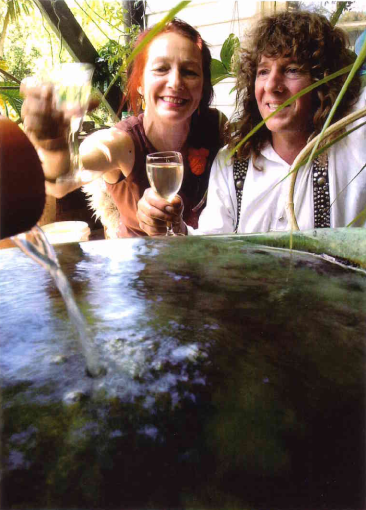
From the Dominion Post
Wellington's first mead brewery opened on Friday, complete with cannon fire, morris dancing and a roast pig on a spit. Health Minister Annette King cut the ribbon and was the first customer, buying half a case of the Haewai Festive Mead. Coral Hyam and Jacob De Ruiter have set up the meadery in an 1865 settlers cottage, which they shifted from Karori to their Houghton Bay property, Wind Gardens. The mead will be sold on the premises, with the opportunity for customers to take pre-arranged tours of the gardens. (Jacob De Ruiter is a landscape architect and author of two books on garden design). The mead, which consists simply of honey, water and yeast, takes three months to brew and another year to age. While recipes for mead are commonly available in books, Mr De Ruiter believes the point of difference for Haewai mead is the water. This comes from a pure spring on the Wind Gardens property, free of chlorination and fluoridation. Hyam and De Ruiter use organic honey whenever possible, preferring the milder flavour of pohutukawa honey to that of manuka. They also make mead from tawari honey, which has more of a fruity flavour. The couple have aimed for an off-dry table wine, sufficiently acid to compliment food. Their meadery has capacity for 8,000 litres a year but they're unlikely to reach that figure for some time. Mr De Ruiter said strict hygiene was essential to make sure there was no bacterial contamination, which has the potential to ruin whole batches of mead. Mead dates back to Roman times but the process was only perfected during the middle ages.
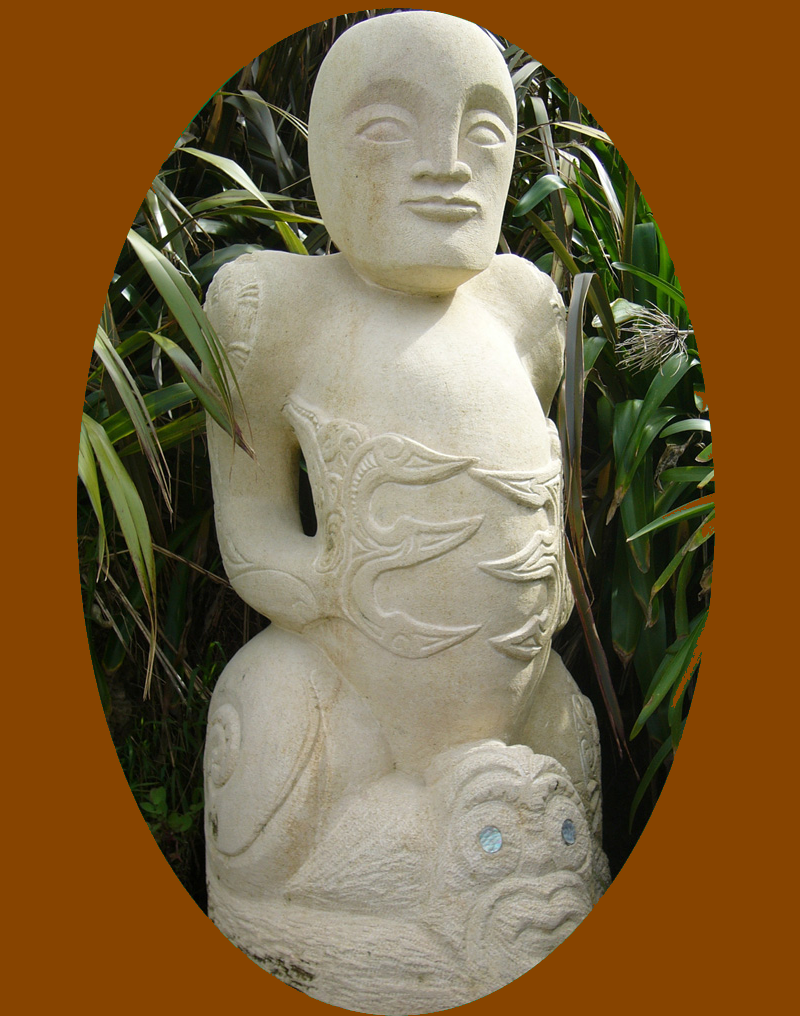
Uenuku
Find his statue in the meadery garden.
Created by artist, Johnno Randall: "Visible manifestations of rainbows or meteors or comets are known as ARIA. The rainbow (aniwaniwa) was the aria of the tribal gods Kahukura and Uenuku. At first they are personifications; later elevated to the ranks of gods. A personification becomes a god when man regards it as such and invests it with power, which he can command by means of ritual and offerings. The rainbow, the visible aria was interpreted accordingly: to your (own) view now. Uenuku was also the tribal god of Tainui, one of my Iwi. Through Uenuku and later his offspring Uneuku Tuwhatu e Turongo. Turongo married the powerful Kahungungu Chieftainess, Mahingarangi: their son Raukawa, is the eponymous ancestor of all Tainui. Raukawa is also a tribe I descend from - he is an ancestor of mine. Which makes it all the more special. His surface design on the shoulders elbows, thighs represent ihi (power) - natural power, not human. The two figures interlocked on the back are Manaia and they symbolise the power of union, love endeavour and protection. The fishnet design is mata-kupenga - the gathering in of things - people, ideas, dreams. The three fingers are an indication of his/her divinity and our direct connection with the power source. Maori called "it" IO. This is a strong benevolent work, which has the blessings of peace and love on it. Te Hai Mauri ora!! The fate between his legs represents all offspring: family, history, whakapapa; continuum - survival; continuum - progress."
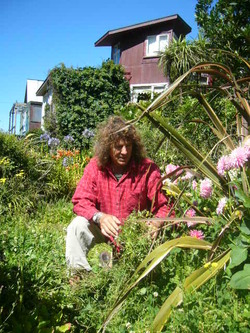
Windgardens
Our own Jacob De Ruiter offers landscaping design services to suit any environment. An especially windy climate can make garden growth difficult; hence the name Wind Gardens. The author of three books on landscape design, Jacob offers sustainable and low maintenance gardens without compromising on beauty. Visit the site at Windgardens.co.nz.
Opening Hours
Sat & Sun: 11.00am - 6.00pm
but, for other times, email us.
We will be able to arrange it.
Please see our Facebook page
for any weekly variations to
our regular open hours.
Address
Wind Gardens
236 Houghton Bay Rd
Wellington 6023
New Zealand